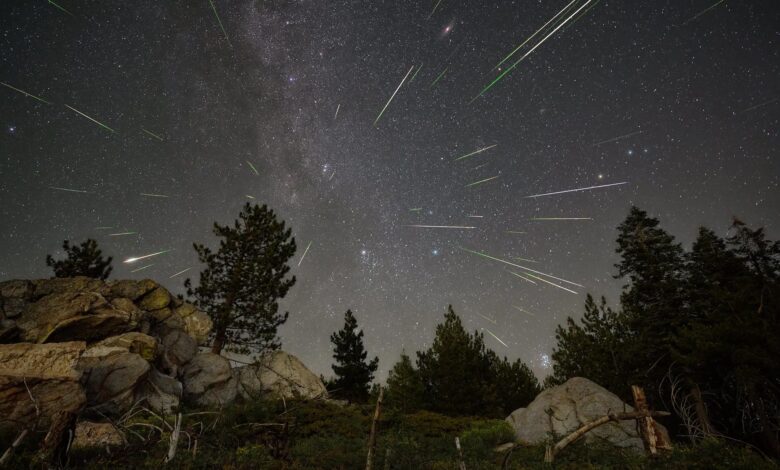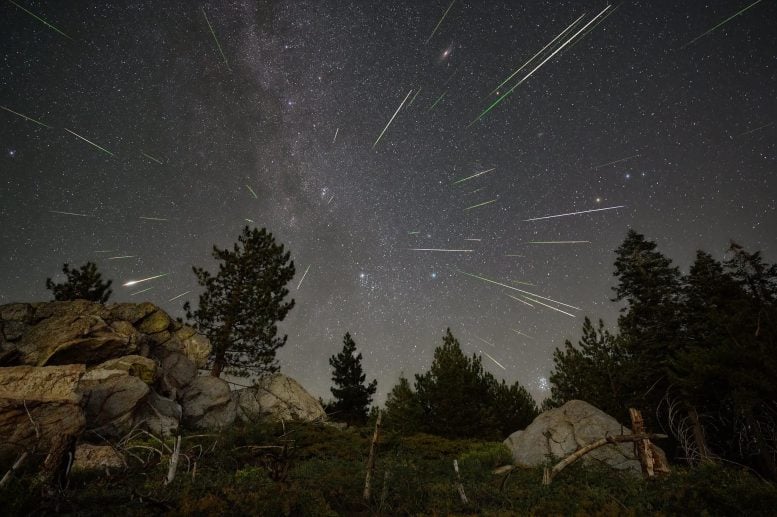Don’t Miss the Delta Aquariid Meteor Shower Light Up the Night Sky


Perseids meteors – which coincide with the Southern Delta Aquariids at the tail end of July – streak over Sequoia National Forest in this 2023 NASA photo. Credit: NASA/Preston Dyches
The Southern Delta Aquariids meteor shower, peaking on July 28, offers a more subdued spectacle compared to the brighter Perseids.
Ideal for viewers in the Southern Hemisphere, the shower is best observed in the darkest skies, with potential sightings of 2-5 meteors per hour. These meteors, thought to originate from Comet 96P/Machholz, are distinguishable by their radiant in the constellation of Aquarius.
Summer Meteor Showers
Most casual skywatchers know the bright, busy Perseids meteor shower arrives in late July and peaks in mid-August. Fewer are likely to name-drop the Southern delta Aquariids, which overlap with the Perseids each summer and are typically outshone by their brighter counterparts, especially when the Moon washes out the Southern delta Aquariids.
This year, with the Southern Delta Aquariids set to peak on the night of July 28, the underdog shower isn’t likely to deliver any surprises. Unless you’re below the equator, it’ll take a keen eye to spot one.
“The Southern delta Aquariids have a very strong presence on meteor radars which can last for weeks,” said NASA astronomer Bill Cooke, who leads the Meteoroid Environment Office at NASA’s Marshall Space Flight Center in Huntsville, Alabama. “Sadly, for most observers in the Northern Hemisphere, they’re difficult to spot with the naked eye, requiring the darkest possible skies.”
Best Viewing Times and Conditions
Meteor watchers – particularly those in the southern United States and points south – will be best served to check out the night sky July 28-29 before moonrise at 2 a.m.
During peak shower activity, under ideal viewing conditions with no Moon in the sky, casual watchers may see 2-5 meteors per hour, flashing into view at speeds of 25 miles per second. A small percentage of these may leave glowing, ionized gas trails that linger visibly for a second or two after the meteor has passed. But most of the noticeable activity for the Southern Delta Aquariids occurs over a couple of days around its peak, so don’t expect to see any past the end of July.
Identifying and Understanding Meteor Showers
You can distinguish Southern Delta Aquariids meteors from the Perseids by identifying their radiant, or the point in the sky from which a meteor appears to originate. Southern delta Aquariids appear to come from the direction of the constellation of Aquarius, hence the name. The Perseids’ radiant is in the constellation of Perseus in the northern sky.
Most astronomers agree the Southern Delta Aquariids originate from Comet 96P/Machholz, which orbits the Sun every 5.3 years. Discovered by Donald Machholz in 1986, the comet’s nucleus is roughly 4 miles across – about half the size of the object suspected to have wiped out the dinosaurs. Researchers think debris causing the Southern Delta Aquariid meteor shower was generated about 20,000 years ago.



